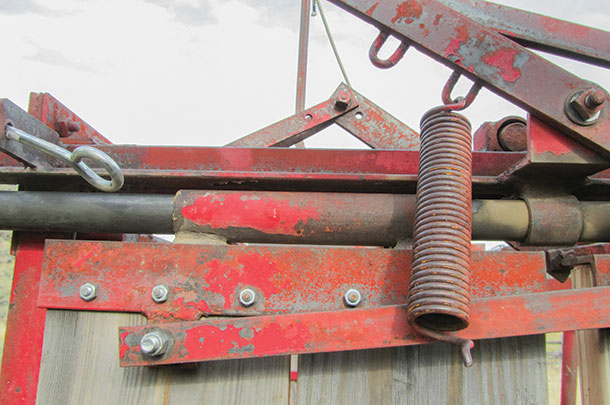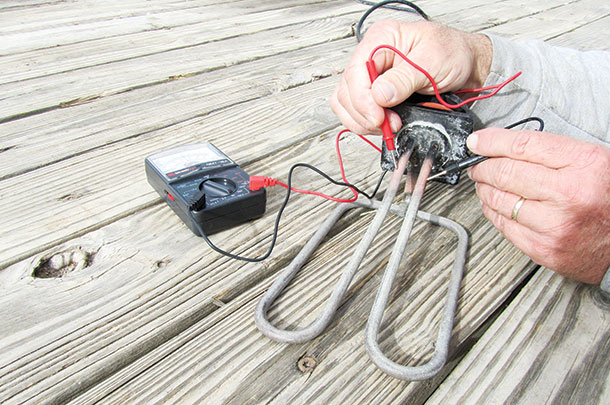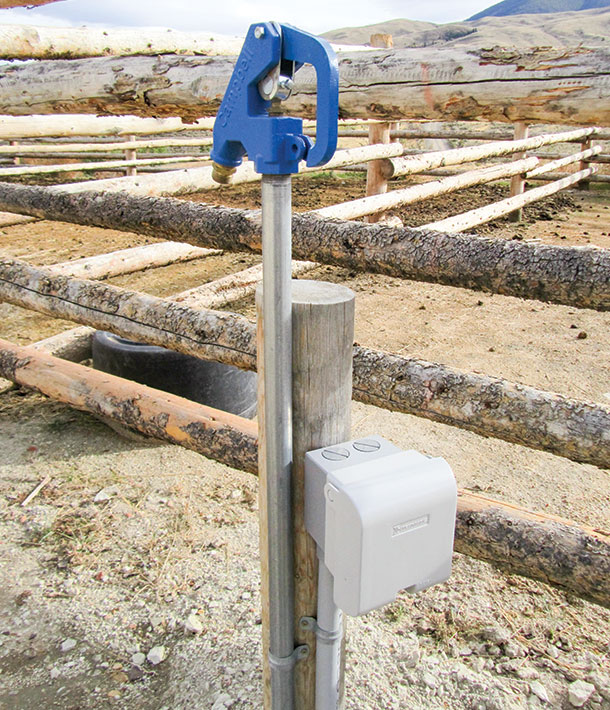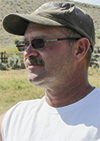When preparing to tackle all of the things that need to be inspected, repaired and restocked, try to organize the projects in order of what must be done before the ground freezes to those tasks that can be done in the relative comfort of a shop or warm house.
Nicholas Lee, manager of Rocking Horse Ranch located near Salmon, Idaho, says, “There is always plenty of day-to-day damage that must be fixed as you go through the winter, but it helps a lot to spend time in the fall going over the facilities and making repairs before everyone is busy feeding and calving cows.
A lot of things get wired together once everyone is running on empty – just trying to survive ’til spring.”
Corrals, fences and chutes
Lee mentions that it is important to inspect the fencing in the pens and corrals to be used throughout the winter. “It is very important to make sure all of the gates you intend to use all winter swing easy. It is very difficult to remedy this problem once the ground is frozen.

We try to set all of the gate posts for any heavy cattle gates in a concrete thrust block, below at least a foot of dirt, to prevent them from heaving from the force of frost.”
While inspecting fences and gates, it is good to look at the condition of cattle chutes and head catches. Look for rust damage, broken welds, broken springs, etc. Apply a light oil to moving parts. Do not use a heavy grease, as cold temperatures will cause grease to be thick and very stiff.
Bob Miller, a professional welder located near Leadore, Idaho, said, “I have repaired many chutes in the area for ranchers. I’ve put new diamond-plate floors in chutes, rebuilt side panels, and repaired tailgates and head catches.
If the rancher calls before the manure has eaten away too much of the base steel, I can usually clean them up [the chutes] and fix them.”
To prevent the corrosion from manure, and the adversity caused by frozen manure in the chute when you need it in the winter, take this time to remove any manure from the chute that was left behind after the fall cattle working.
Feeders, bunks and shelters
Inspect feeders and bunks you intend to use. As in the case of the chutes, damage caught early enough can be repaired by cutting out bent and broken sections and welding in new pieces.
Special care should be given to barns and shelters. These facilities can take a lot of punishment from livestock and the elements. Make sure doors open properly. Check the condition of hinges and remove obstructions from the path of travel. Inspect windows, siding and roofing.

Left unrepaired, wind and stock can work on the damaged areas, increasing the overall damage to the building. Inspect lights and electrical outlets. These components can be easily overlooked until you need them. If lights or outlets do not work, check for corrosion in switches, fixtures and wiring connectors.
Water systems and lines
Inspect water systems. Make sure troughs are not leaking to prevent ice floes. Check float valves and heating elements. Float valves can become plugged with sand and rust scale, preventing them from functioning properly.

If you cannot free a float valve of sand by working it open and closed with water present in the system, you will need to disassemble the valve and clear the debris. Check heating elements in the pans and the heat tape on the water supply lines. If you are not sure if they are working, check for continuity through the element using a multi-meter.
Lee says, “It is a big crisis when you discover a water supply line frozen on an automatic waterer on a -30 degree morning. If you have any doubt about the heat tape, replace it.”
Vehicles and machinery
Once you have inspected and repaired facilities, you should winterize all of the vehicles and machinery you plan to use to provide feed to the cattle through the winter. It is a good idea to go over trucks and tractors and make sure the engine heaters function properly. While servicing the engines, be sure to check that the anti-freeze is rated to the coldest weather you expect.
A 50-50 blend is adequate protection for most parts of the U.S. Next, make sure you have changed fuel filters and water separators on all engines operating on diesel fuel. Treat the fuel with a good anti-gel water dispersion agent.
Bruce Carpenter, who farms near Gooding, Idaho and operates heavy trucks in the oil fields of North Dakota, says, “The best solution is prevention. It is a good idea to replace the fuel filters and water separators in anything that runs on diesel before the cold weather sets in, and treat the fuel with a good anti-gel supplement.
The leading names in diesel supplement are rated for year-round use, so don’t worry about adding it too early in the fall. If you expect to use a truck or tractor hard all winter, it’s a good idea to have spare filters on hand and change them every month or so.”
After making sure your vehicles and tractors are prepped for winter, inspect all of the machinery you will use to feed the cattle. Hay processors and choppers may not see service for part of the year, and it is easy to overlook the condition of some of the components of these machines.
Check the tires to make sure they are not weather-checked and are properly inflated. Grease the bearings to all moving parts and drivelines. Check the oil level in gearboxes and make sure seals are not leaking. Inspect the condition of flails, teeth, auger flighting, etc. Clear any old twine or wrap from last season.
Winterize the herd
Now, if you have checked all of the outdoor preparations off your list, it is time to turn to the final process of making sure your herd health, calving supplies and tools are in order. It is convenient to have these items consolidated to one room or area with cabinets and shelves to organize items by type and purpose.
As you organize these items, take inventory and restock any needed vaccine, antibiotics, oxytocin, uterine boluses, syringes, needles, rubber gloves, OB sleeves, OB scrub, iodine, colostrum replacer, milk replacer, etc.
Make sure to locate and clean items such as calf pullers, OB chains/straps, OB handles, calf drenches, bottles, nipples, eartaggers, banders, etc. Also make sure you are prepared for the type of record-keeping that you use: notebooks, pens, pencils, laptop, etc.
Lee ends by saying, “I like to have all of the medical supplies on hand before calving season. Due to the distance to town, combined with the busy nature of the season, we can’t count on getting a veterinarian out in time to save a cow or calf.
We are set up to handle about any malpresentation, with the exception of a C-section, we encounter in the average calving season.” ![]()
PHOTO 1: This corral fence was rebuilt and the gate hung on a post set in concrete with diagonal bracing for extra support.
PHOTO 2: A Thorsen chute with a broken tailgate spring.
PHOTO 3: Be sure to check the continuity of a water trough heater element using a multi-meter.
PHOTO 4: A protected electrical outlet near a water source (the outlet is protected from ground fault circuit interruption). Photos provided by Michael Thomas.
Michael J. Thomas is a freelance author from Salmon, Idaho. Email Michael J. Thomas.








